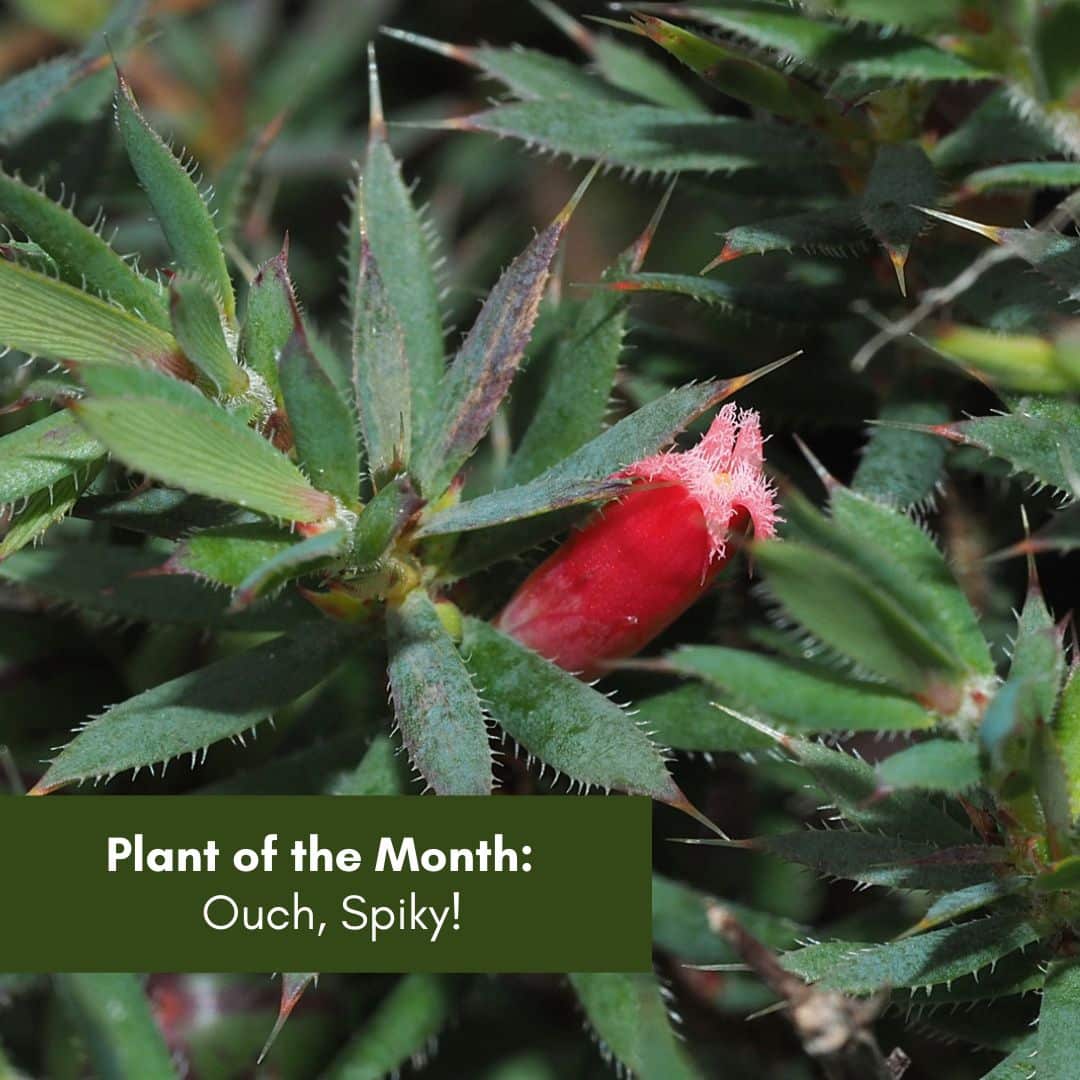Plant of the Month: Ouch, Spiky!
One of my favourite groups of plants are the Epacrids (recently lumped in with the Ericaceae), small shrubby plants with small spiky leaves, parallel venation and tubular flowers with five petals, these can be roughly divided into dry fruit and fleshy fruit with the fleshy fruited ones usually being pretty tasty.
Epacrids are generally found on low pH sandy or granitic soils and are a common feature of heathlands with Port Stephens having some great examples.
Bearded Heath Leucopogon spp
The Leucopogons are a short shrub to about 1 metre in height with short spiky leaves to about 15mm long, they are well known for their small, white flowers with hairy corolla (Leucos- white, pogon – beard) and produce small sweet fruits about 4-5mm diameter.
Leucopogon lanceolatus fruit
Leucopogon appressus flower
Pine Heath Astroloma pinifolium and A. humifusum
There’s two species of Astroloma in New South Wales, both of which grow in the Hunter, Astroloma pinifolium is restricted to the coast with Astroloma humifusum extending well inland on sandy soil (particularly around the Singleton to Broke area). Both plants are only to about 15cm tall but but will spread out to about 50 centimetre diameter, They have long tubular red and green flowers and a fruit roughly 1 centimetre diameter. Astroloma pinifolium has linear, sometimes glaucous leaves which look like pine needles ( “pini”: pine, “folium”: leaf), A. humifusum has narrow elliptic to lanceolate leaves with darker red, though smaller flowers.
Astroloma pinifolium
Astroloma humifusum
Five Corners Styphelia spp
Generally known as Five Corners because it you look at the fruit and squint a bit you can (sometimes) make out that the fruit has five corners, with Styphelia viridis (Green Five Corners – “viridis” is Latin for “green”) found along the Hunter coast and Styphelia triflora (Pink Five Corners) found on sandstone in from around Cessnock to the Goulburn River National Park in the Hunter. Both are shrubs to around 1.5 metres both with spiky leaves to around 30 millimetres long with tubular flowers to about the same, flower colour and location are usually the giveaway to which species they are. Both have edible fruit to around 10 millimetre diameter and the Styphelia viridis often has lemony nectar.
Pink Five Corners Styphelia triflora flower
Green Five Corners Styphelia viridis flower
What’s in a Name?
| English | Latin | Greek |
| Bag, pouch, sack | Marsupi-, sacci- | Thylaco-, thylax |
| bright | nitidi- | lampro- |
| desert | deserti- | eremo- |
| fringe | Fimbria-, fimbri- | Lomato-, -loma, thysano- |
| narrow | angusti- | Lagaro-, steno- |
| oil | olei- | Elaio-, lipa- |
| single | Uni-, soli | Haplo-, mono |
| south | Australi-, meridionali- | noto- |
And some test ones, what could these names refer to?
Thylacoleo (hint, it’s not a plant)
Eucalyptus nitens
Eremophila debilis
Notolea microcarpa
Answers to last month’s.
Xerochrysum: Dry, golden, which is pretty appropriate for a paper daisy.
Theobroma: God food, Theobroma cacao is the Cacao tree which provides us with chocolate.Can’t argue with that one.
Casuarina glauca: Casuarina with blue-grey leaves. The Swamp Oak,
Dianella caerulea Dianella from Diana Roman goddess of wild animals, caerulea refers to the dark blue fruits the plant produces
Litoria caerulea is the Green Tree Frog, Litoria means beside the sea or water but why the caerulea? Apparently the original specimen sent to England was placed in the wrong preserving agent and the yellow colouring leached out leaving the frog blue.
And if you want a plant name translated, well, “Ask a Plant Nerd” and I’m sure we can make something up!

